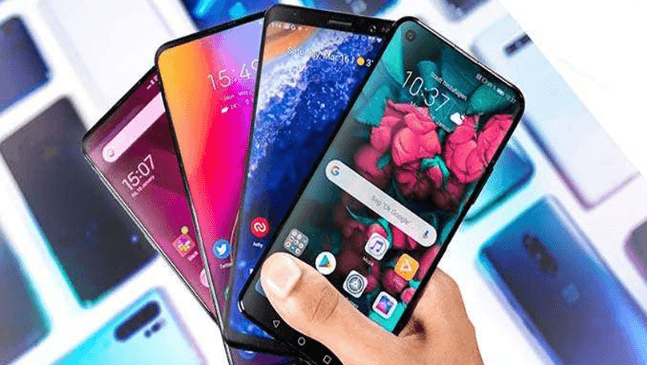The Role of Free Phone Services in Enhancing Connectivity for Low-Income Households

Key Takeaways:
- It is essential to understand the implications of the digital divide and its particular impact on low-income households.
- Examining the evolution of free phone services and their pivotal role in community empowerment, programs like Michigan Lifeline are used as case studies.
- They are investigating the benefits these services offer in various facets of life, including education, emergency services, and mental health support.
Table of Contents
- Introduction to the Digital Divide
- The Evolution of Telecommunication Assistance Programs
- Analyzing the Benefits of Free Phone Services
- The Economics of Free Phone Services
- Connectivity and Mental Health
- Technology and Emergency Response
- Overcoming Barriers to Access
- The Future of Connectivity and Inclusion
- Conclusion: Empowering Communities Through Connectivity
The digital divide is a significant social issue, referring to the gap between those with access to the internet and computers and those without access. Access to reliable telecommunications has become necessary in our modern world, serving as a conduit for accessing a wide range of critical services. The digital divide can present an impenetrable barrier for low-income households, leading to various economic and personal challenges. The pivotal role played by communication in today’s world elevates the importance of bridging this divide, emphasizing the need for initiatives that provide such essential services to marginalized communities.
The Michigan Lifeline program is a quintessential example of such initiatives, offering free phone services to qualifying residents within the state. As part of a broader movement to make communication accessible for all, programs like Michigan Lifeline break down socioeconomic barriers, allowing individuals to participate fully in society. They act as a beacon of hope, aiming to empower communities by providing the tools needed for day-to-day survival and success in a highly connected world.
Introduction to the Digital Divide
Accessibility to digital technology is the great equalizer in our information-rich era, creating pathways for participation in various economic, educational, and social pursuits. Unfortunately, there remains a stark disparity—often along socioeconomic lines—between those with readily available and those without such resources. This inequality, known as the digital divide, not only limits individual opportunities but also hinders the broader development of communities unable to tap into the benefits of the digital world. The lifeline programs address this division by weaving a net of support for disadvantaged households, connecting them to a grid of opportunities, and facilitating their inclusion in the digital dialogue that shapes our present and future.
The Evolution of Telecommunication Assistance Programs
Telecom assistance programs have undergone significant transformations over the years, adapting to technological advancements and the changing communication habits of society. What once began as a focused effort to subsidize landline telephone access has expanded into a multifaceted approach encompassing modern mobile services’ affordability and availability. As indicated in their overview of efforts to bridge the digital divide, the Federal Communications Commission (FCC) has been at the helm of this evolution. By recognizing the need for universal access to telecommunication, the FCC has spearheaded initiatives like the Lifeline program to ensure that the most vulnerable populations have the primary means to communicate.
Analyzing the Benefits of Free Phone Services
The advantages of free phone services are manifold, influencing many aspects of modern life. For individuals in distress, the immediate benefit is having a reliable method to reach emergency services, a potential lifesaver in critical situations. More broadly, the capacity to engage with potential employers, apply for jobs online, and even partake in telehealth services open up economic and personal growth channels that are otherwise obstructed. Educational resources become more accessible, enabling students and adults to enhance their knowledge and skills. As a result, Lifeline programs play a pivotal role in leveling the playing field, offering those in low-income brackets the same digital tools that many take for granted.
The Economics of Free Phone Services
The economic rationale behind free phone service programs extends beyond the immediate financial relief these services provide individuals. By facilitating communication, these programs use connectivity as a catalyst for broader socioeconomic development, often resulting in tangible benefits within the wider community. Such services can help to reduce unemployment levels by simplifying the job hunt process and boosting job retention through reliable employee-employer communication. They can also contribute to the growth of small businesses by expanding their reach and operational capabilities. Ultimately, the program’s financial model, built on shared prosperity, advocates for a ripple effect that could stimulate economic recovery and progress in most needy regions.
Connectivity and Mental Health
As highlighted by UN News, there is an indelible link between communication and mental well-being—a more vital link in the face of adversities, such as the COVID-19 pandemic. Connecting with family and friends can alleviate isolation and foster community and support. For those facing physical barriers to social interaction, such as the elderly or disabled, access to free phone services can be instrumental in maintaining their social networks and psychological health. The sense of comfort derived from a quick chat or a message exchange can be powerful and therapeutic, emphasizing the importance of telecommunication as a tool for emotional support.
Technology and Emergency Response
In times of crisis, the ability to communicate swiftly and effectively can be the difference between chaos and coordination. When natural disasters or other emergencies strike, free phone services prove invaluable in disseminating critical information, coordinating with response teams, and allowing individuals to signal for help. The networks maintained by programs like Lifeline stand as a testament to the foresight in establishing a resource that is both reliable and accessible to those who would otherwise be disproportionately impacted by the absence of communication means during crucial moments.
Overcoming Barriers to Access
Obstacles to accessing these free phone services can take various forms, from bureaucratic red tape to cultural and language barriers. Efforts continue nationwide to streamline processes, ensuring a user-friendly experience that encourages eligible individuals to avail themselves of these programs. Service providers are increasingly attentive to the demographic challenges, implementing tailored measures to cater to non-English speakers and diverse cultural groups. Simplifying the enrollment process and maximizing user accessibility are key focuses that aim to widen the reach of these vital services, reinforcing them as fundamental pillars in bridging the digital divide.
Read also Leveraging Data Analytics for Effective Business Decision-Making
The Future of Connectivity and Inclusion
Looking ahead, the trajectory of technological innovation points to a future enshrined in connectivity. However, inclusion remains the crucial factor determining the real success of technological advancements. Emerging tech, such as 5G networks and the Internet of Things (IoT), promises greater accessibility and interconnection. It is incumbent upon policymakers, community leaders, and telecom companies to ensure that these advances do not leave behind the very communities the programs were initially designed to empower. Advocacy for policy adaptations and a continuous push for inclusive growth will be paramount in the ongoing journey to obliterate the digital divide.
Conclusion: Empowering Communities Through Connectivity
In closing, the efforts made by free phone service programs, particularly exemplified by the Michigan Lifeline program, are pioneering the way toward a more connected and equitable future. Universal access to telecommunications is not just a service—it’s a necessity, a right, and a stepping stone to myriad opportunities for advancement. Through our collective efforts, we can ensure these vital tools are recognized as indispensable elements in the empowerment and upliftment of our communities. The ongoing mission to close the digital divide is more than a technological challenge; it’s a social imperative that calls for persistent dedication and shared vision.





